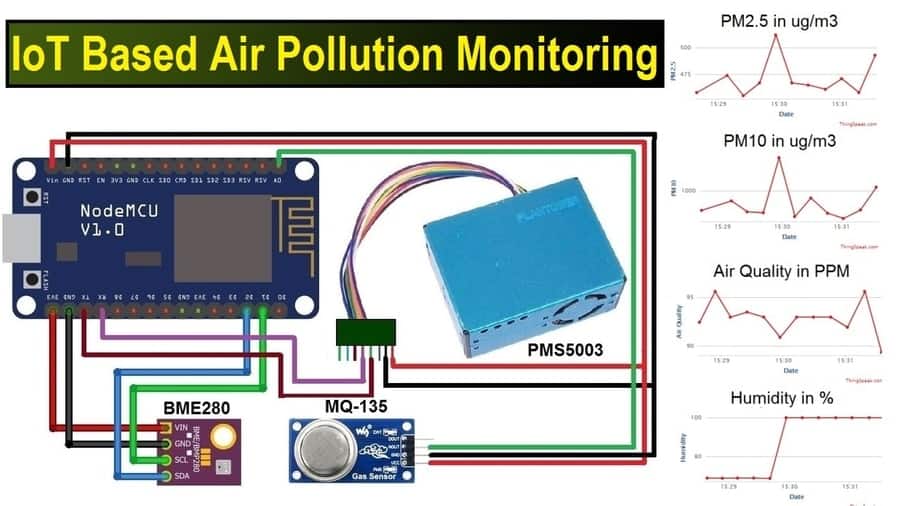
Best Way to Track Air Pollution with IoT
In recent years, air pollution has become a significant concern for many people around the world. With the rise of industrialization and urbanization, the quality of the air we breathe has been deteriorating, leading to various health problems. As a result, there is a growing need for effective ways to monitor and track air pollution levels in real-time. This is where IoT (Internet of Things) comes into play.
IoT technology allows us to collect and analyze data from various sensors that are deployed in different locations to monitor air quality. These sensors can measure various pollutants such as particulate matter (PM), nitrogen dioxide (NO2), sulfur dioxide (SO2), carbon monoxide (CO), and ozone (O3). By using IoT devices, we can create a detailed map of air pollution levels in different areas and detect any changes or spikes in pollution levels immediately.
So, what is the best way to track air pollution with IoT? Let’s explore some of the key steps and technologies involved:
Step 1: Deploying IoT Sensors
The first step in tracking air pollution with IoT is to deploy sensors in the areas of interest. These sensors can be stationary devices placed in specific locations or mobile sensors that can be attached to vehicles or drones. The sensors should be capable of measuring various pollutants accurately and sending real-time data to a central server for analysis.
There are many types of sensors available that can measure different pollutants. For example, optical sensors can detect the presence of particulate matter in the air, while electrochemical sensors can measure gases such as NO2 and CO. It is essential to choose the right sensors based on the pollutants you want to monitor.
Step 2: Data Collection and Analysis
Once the sensors are deployed, they will start collecting data on air pollution levels. This data is then sent to a central server where it is analyzed in real-time. Advanced algorithms can be used to process the data and identify trends or anomalies in pollution levels. This analysis can help authorities take timely actions to reduce pollution and protect public health.
Visualization tools can also be used to convert the data into interactive maps or graphs, making it easier to understand and interpret the pollution levels. These tools can provide valuable insights into how pollution levels are changing over time and help in making informed decisions to improve air quality.
Step 3: Reporting and Communication
One of the critical aspects of tracking air pollution with IoT is reporting the findings to the relevant stakeholders. This includes government agencies, environmental organizations, and the general public. By sharing the data on pollution levels, we can raise awareness about the issue and encourage people to take necessary actions to reduce pollution.
Communication is key in addressing air pollution, and IoT technology can play a vital role in facilitating this communication. Real-time updates on pollution levels can be shared through various channels such as websites, mobile apps, or social media platforms. This transparency can help build trust among the public and ensure that everyone is aware of the air quality in their area.
Conclusion
Tracking air pollution with IoT is a powerful tool that can help us monitor and improve air quality in our cities. By deploying IoT sensors, collecting and analyzing data, and communicating the findings effectively, we can work towards creating a cleaner and healthier environment for everyone. So, let’s embrace IoT technology and take proactive steps to tackle air pollution for a better future.
The above article provides a comprehensive overview of the best way to track air pollution with IoT. By following the steps outlined and leveraging the power of IoT technology, we can make significant strides in addressing air pollution and safeguarding the health of our communities. Let’s work together to create a cleaner and greener world for all!Was this helpful?
0 / 0